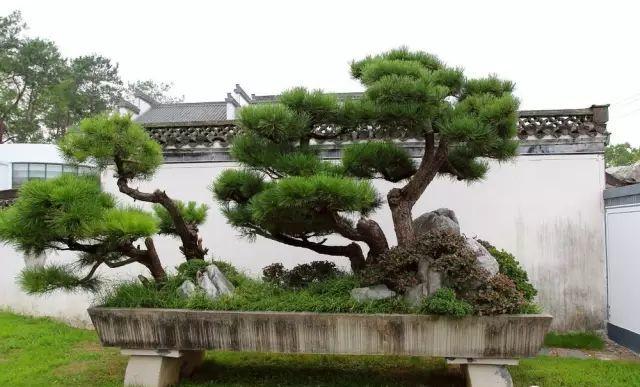
Chinese bonsai art appreciation, as an aesthetic awareness activity, its aesthetic effect is subject to many factors.
The premise of bonsai appreciation is bonsai, and the merits of the work itself directly restrict the success or failure of the appreciation activity. To appreciate bonsai, the first one is that the bonsai itself must have a scenery to appreciate, so as to arouse people's aesthetic interest, will attract the viewer to point their mental activities and focus on the bonsai works. The ancients "read the word method, took the predecessor's name sentence with excellent artistic conception, and constructed this artistic conception in my imagination." ("Hui Feng Words", Vol. 1) This is worth learning from bonsai appreciators. Only those bonsai works with "excellent artistic conception" are more intriguing and interesting.
Because the effect of bonsai appreciation is the result of the two-way intersection between bonsai and the viewer. Therefore, in addition to the above, the quality of the admirers themselves is also important. Because he (she) has a subjective role in the process of appreciation, the cultural quality and aesthetic taste of the appreciator greatly affect the effect of appreciation. Chinese bonsai art has a long history, and its production and development are deeply influenced by ancient Chinese poetry, painting and gardening art, and have a deep national cultural foundation. For such an art with rich cultural connotations, if the appreciator himself lacks good Chinese cultural literacy, he cannot mobilize various cultural knowledge and aesthetic experience when appreciating, and it is difficult to better understand and grasp the meaning of bonsai. If we appreciate the bonsai art of different nationalities, different eras and different schools, we should also mobilize relevant national knowledge and historical knowledge under the guidance of the aesthetic principles of historicism, and link them with specific bonsai art creations to achieve a certain understanding, which has a more in-depth aesthetic effect.
In the specific appreciation, the stage of "contemplation" should be "exhausted", perceived in detail, in order to produce rich and intense emotional activities in the integration of various feelings, so that the sense of beauty can be sublimated. In the stage of "product", it is required to "cheng huai taste elephant", where the "taste image", for bonsai appreciation, refers to the taste of the pot scene, is the viewer according to their own life experience, cultural literacy, thoughts and emotions, etc., the use of association, imagination, empathy, thinking and other psychological activities to expand and enrich the scene in the pot, appreciate, develop the process of bonsai artistic conception, as described above. And the "chenghuai" here, that is, clear in the heart, and abandon the distractions, is the psychological preparation that should be done before appreciating the bonsai.
Bonsai is a special garden art that is also different from gardens when appreciated. No matter how small the garden is, the viewer is always immersed in the view. However, no matter how big the bonsai is, the appreciator can only be outside of it, which requires the appreciator to "enter it". Only by removing all earthly worldly ideas, transcending all utilitarian considerations, and maintaining a state of mind of "waiting for things in vain" ——— aesthetic state of mind can the admirer establish an aesthetic relationship between the aesthetic subject and the bonsai, and can produce a sense of beauty. Otherwise, "it would have been in vain to have admired the twelve pavilions." It would be better to go home and relax." (Peony Pavilion Dreams)
a thousand songs and then know the sound, look at the thousand swords and then recognize the instrument. (Liu Xun's "Wenxin Carved Dragon Zhiyin") For Chinese bonsai art, only by looking more and appreciating more, "reading good sentences frequently", and appreciating practice more, can we continuously accumulate bonsai aesthetic experience and improve the level of bonsai appreciation. Overall, the beauty of bonsai is gradually growing.